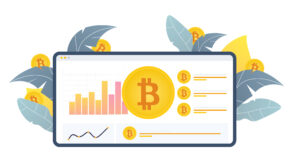Step-by-step Explanation of Bitcoin Transaction Fees
Almost every time when it comes to transactions on the blockchain, the phrase “almost free” is present in their description. The system charges a small fee to process any transaction. These funds are needed for two purposes:
- To pay rewards to people who invest their funds or other resources to confirm transactions (miners or stakers, depending on the consensus mechanism);
- To protect the network from spam.
Blockchain fees are required to complete transactions, and each blockchain has different fees charged.
What Are the Fees in the Bitcoin Blockchain
The size of the transaction fee can be considered symbolic. Theoretically, it may even be zero, but it is still not worth setting up such experiments.
Every transaction must be confirmed by miners. When a block is mined, miners receive the commissions in the block and the block reward. Since miners choose the block for mining themselves, it is obvious which blocks will be mined first.
Why You Need Transaction Fees
The functioning of cryptocurrency is very similar to the functioning of fiat money. Digital money can be received in the same way as payment for a product or service produced; it can be bought or exchanged.
You can also dispose of coins in the same way as you dispose of your salary in the currency of your country: exchange, sell, pay for purchases. After figuring out if is XRP a good investment, invest in this asset.
But besides the usual ways of replenishing the balance in the crypto world, there are also specific ones that are not available offline: mining and staking.
The miners who first mined a block receive a fixed reward and commission from the mined block. The main income of the stakers is capped at the transaction fee.
It is important to know that the size of the fixed remuneration for miners in PoW networks (in particular, in the Bitcoin blockchain) decreases exponentially over time. Accordingly, at some point, commissions will become the main income of miners.
Another function of the commissions is to ensure the security of the network. Since you have to pay for each transaction, mass mailings like DDoS attacks will be too expensive for organizers. The same applies to the spread of spam. Accordingly, the likelihood of such actions decreases and is almost almost zero.
How Blockchain Fees Are Calculated
Each blockchain has its own system for calculating commissions. They differ in detail, but they can still be divided into two main groups: dynamic and static. For example, let’s have a look at Bitcoin transaction fees explained.
In the Bitcoin blockchain, these calculations are done dynamically. The amount of payment is calculated for each transaction, moreover, in some wallets it can be set manually at your discretion. Recall that it is not worth underestimating the size of the commission, since your transaction may be ignored by miners.
The commission is calculated in proportion to the size of the transaction. Suppose you are making a 900 byte transaction with an effective average commission of 70 satoshi per byte. This means that you have to pay 63,000 satoshi to complete the transaction.
Shipping costs depend on market volatility. In periods of high activity, it increases, with a decrease in volatility, it decreases.
Bottom Line
Network charges are required for the proper functioning of the network. They guarantee the completion of your transaction and keep the network secure.
Cover Photo by Jeremy Zero on Unsplash
















